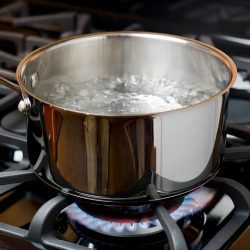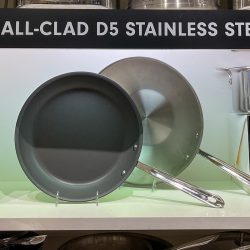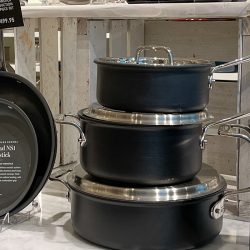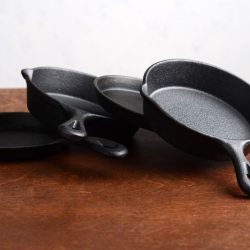Having a bottom that is not flat or warping is a common issue faced by any cookware, including All-Clad. Want to know the causes and what to do to fix this warping issue? Well, we did some research about this and have your answer below!
The following are the causes of warping in All-Clad:
- Dousing the hot pan with cold water.
- Cooking at extremely high temperatures.
- Mismatch size of the pan and burner.
- Thin walls of the cookware.
- Certain materials are more prone to warping.
To do fixing the warped All-Clad pan, below are the two methods you may try:
- Towel & Hammer Method
- Wood Block Method
In this article, we’ll discuss the causes and methods mentioned above. We’ll also share with you the impact of warping on your cooking. More information is ahead, so keep reading!
Why Is My All-Clad's Bottom Not Flat?
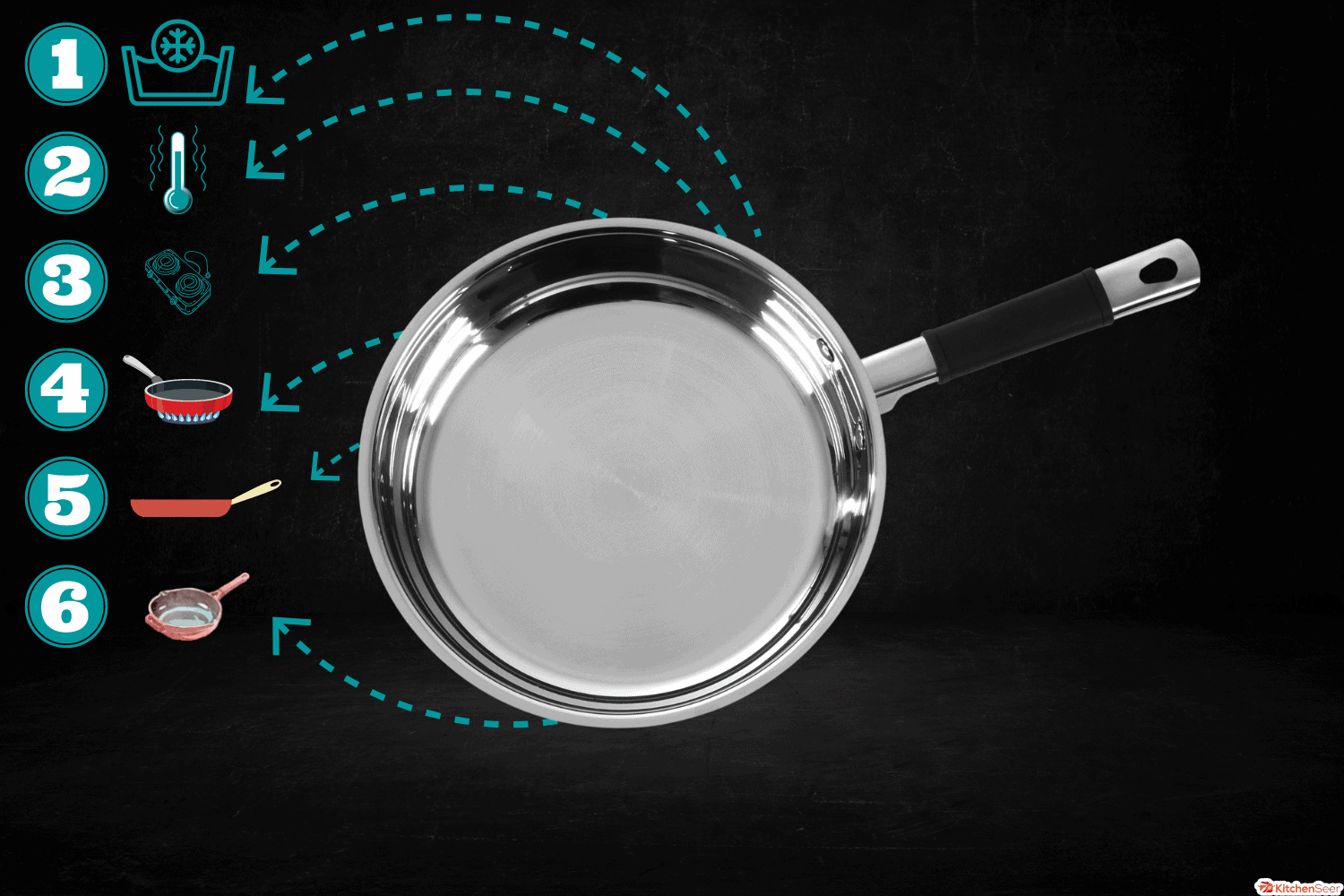
All-Clad is well-known premium cookware. They are produced with materials and bonding techniques of the highest caliber and are promised to last a lifetime.
However, it is not exempt from warping as it happens in any cookware. A warped or unsteady pan is unwieldy, unsafe, and won't heat evenly since the bottom won't lie level on a burner or oven rack.
Understanding why warping occurs is the best approach to preventing it in your cookware.
Dousing The Hot Pan With Cold Water

Warping of pans is most frequently caused by rinsing them with cold water while they are still hot. Do not rinse or soak your pans in cold water while they are still hot, despite the temptation to do so after cooking to let them cool off.
This will cause thermal shock, the unequal expansion or contraction of an object brought on by exposure to a sudden temperature change.
Cracking, distortion, and warping occur when the stress or shock is greater than the material's capacity to withstand it. When cold water is abruptly brought into contact with one of the pan’s sides, the cold water forces the pan's atoms to swiftly and unevenly compress.
Because the pan's atoms contract uniformly throughout, a pan that cools more gradually is less likely to distort. Because thermal shock warping happens so frequently, practically all cookware manufacturers advise customers not to place a hot pan in cold water.
In addition to these warnings, All-Clad also makes it explicit in their warranties that you are not protected if your pans warp due to thermal shock.
To avoid thermal shock, let your heated pan cool for a few minutes before washing it with warm water rather than rinsing it with cold water.
When deglazing a pan, set the heat to medium or lower, use deglazing liquid that is room temperature (water, wine, broth, etc.), and add a little bit at a time.
Cooking At Extremely High Temperatures
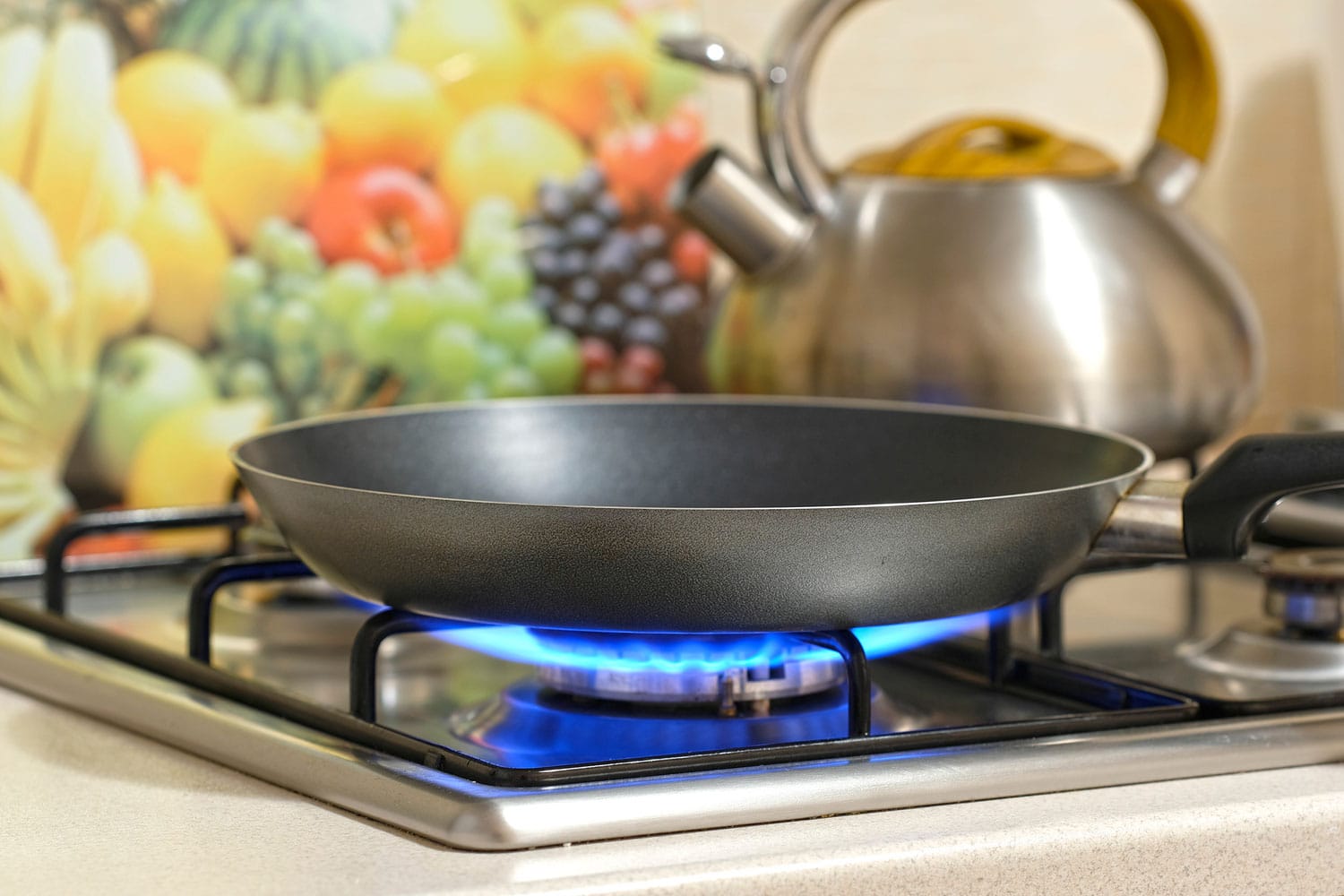
This overheating is another reason for warping, and the underlying science is the same as the previous cause—thermal shock.
Compared to a pan cooked on medium, an overheated pan is far more likely to distort when it comes into touch with water, a piece of cold meat, or deglazing liquids since the temperature differential is greater.
Even if a scalding hot pan is allowed to cool down naturally, there are situations when the temperature differential between the pan and the cool air is sufficient to produce warping.
Furthermore, a hot pan can become deformed without coming into contact with anything cold. Simply heating it too quickly can cause it to distort.
Medium to high heat is nearly always hot enough if you allow the pan time to preheat, especially if you're using well-made cookware. For All-Clad, it is indicated that you should only use high heat for boiling water in their usage guidelines.
To reduce the temperature difference between the pan and meat when searing or browning food over high heat, bring the meat to room temperature before putting it on the pan.
Mismatch Size Of The Pan And Burner
For instance, only a tiny portion of the middle of a large pan touches the heat source when it is placed on a small burner. Heat concentrates in a little area when a large pan is kept on a small burner.
This indicates that the pan heats and cools unevenly, causing the center to bulge.
Using only small pans on small burners and the same way or size as for the large pans is a simple approach to this problem.
If none of your burners will fit your pan, proceed with extreme caution and heat the pan gently to ensure that the entire thing heats up more uniformly.
Thin Walls Of The Cookware

Not all All-Clad cookwares have the same wall thickness. Thin-walled pans are significantly more susceptible to deformation than thick-walled pans.
Thinner pans lose heat faster than thicker pans because heat is constantly lost from pans into the air.
This means that thin pans are less likely to keep an even temperature throughout and are more likely to have hot and cold patches. This will cause warping.
That is why it is better to purchase a thicker one, with at least 0.1” thick. Anything less is too thin and prone to warping.
A different method of figuring out a pan's relative thickness is to compare the weight of others with the same dimensions. A thick pan will typically weigh substantially more than a thin one.
Certain Materials Are More Prone To Warping
Warping occurs more frequently in some metals than others. Due to its high thermal expansion coefficient, aluminum is the metal most likely to warp among those often used for cookware.
They are prone to warping because most nonstick cookware has an aluminum base with a nonstick coating on top.
Due to their low thermal expansion coefficient, cast iron and stainless steel are less likely to warp.
Cookware made of stainless steel is not resistant to warping, and not all cookware made of aluminum will warp. Using aluminum cookware requires extra caution to prevent sudden temperature changes.
See this stainless steel All-Clad on Amazon.
There is no way to eliminate aluminum because it is used in almost all nonstick cookware. Some experts recommend purchasing cookware built from hard-anodized aluminum.
See this hard-anodized aluminum All-Clad on Amazon.
How Do You Fix A Warped All-Clad Pan?
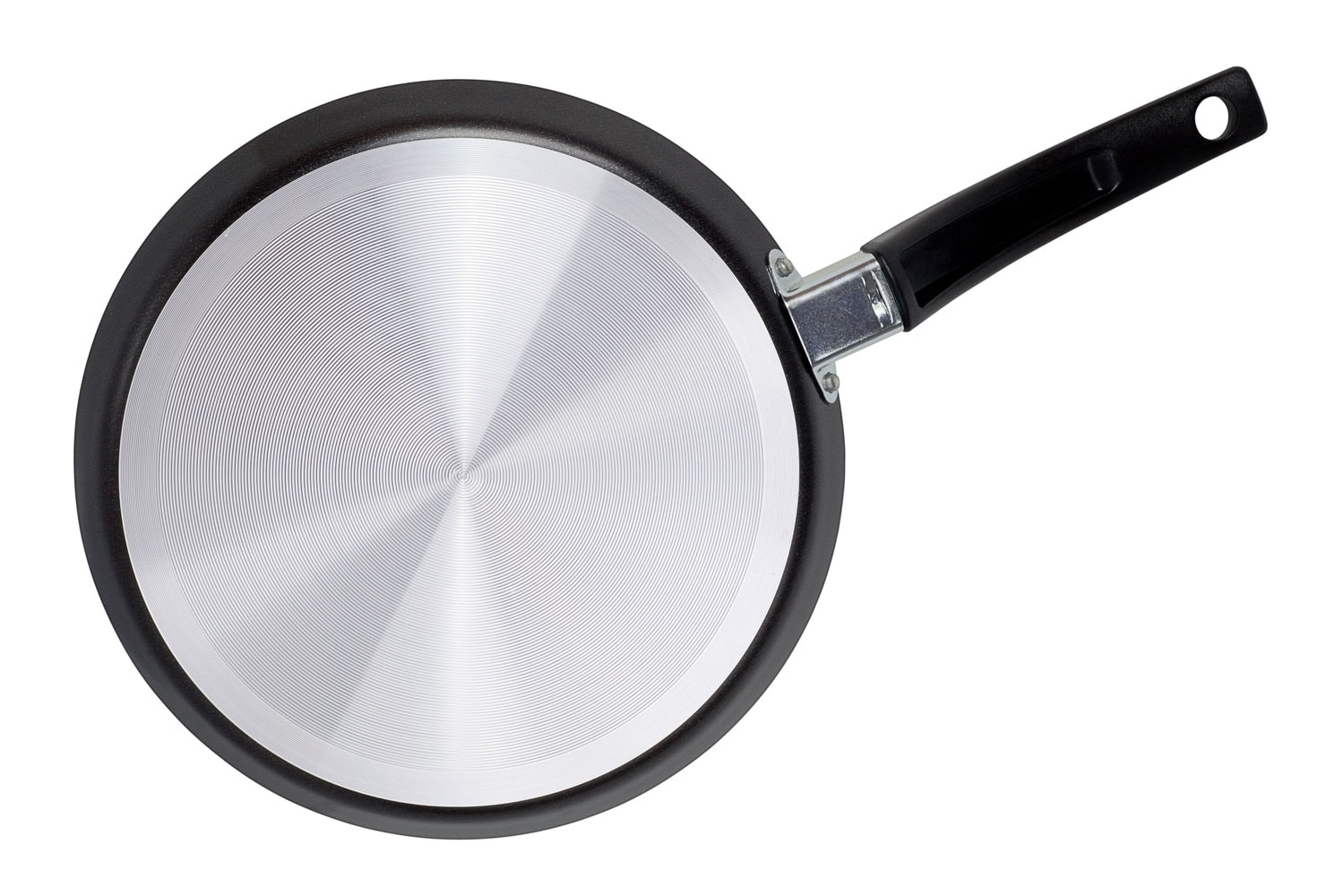
The simplest way to resolve this warping issue is to buy a new one. However, if you are not yet ready to let go of your warped All-Clad cookware, here are two quick techniques you may try.
Towel & Hammer Method
In this method, you'll need a hammer, two towels, and some. Cookwares that aren't yet seriously distorted respond well to this technique.
Below are the steps to follow:
- Look for a flat, sturdy surface like a concrete floor or a workbench.
- Lay a towel on the flat surface to protect it. This towel also will act as padding to prevent further damage to your pan during this technique.
Click here to see this towel on Amazon.
- Warm up the pan by heating it on low fire for a few minutes (around 10 minutes).
- Carefully move your pan to the surface. Lay it on the towel in the same manner as you would on the stove if the cooking surface is warping upward. However, place it face down if the cooking surface is curved downward like a bowl.
- Place a second towel directly on top of the distorted metal. Hammering without towels could leave marks on the pan or hammer a soft surface.
- Begin pounding the metal flat using a hammer. Hammer only on the warped section.
See this mallet hammer on Amazon.
- Turn to check if the bent section is already even or level, and smooth out any bumps the hammer may have caused.
For you to see how this is done, check out this video on YouTube:
Wood Block Method
Try this approach for cookware that is severely deformed. The procedure is the same as above but instead of using a second towel, use a wooden block.
Click here to see these wood blocks on Amazon.
Use a hammer or mallet to strike the wooden block firmly until the pan returns to its original shape. The wooden block flattens the whole surface of the pan by distributing the hammer's impact over an entire area.
To even out everything, you might need to hit the block in a few different places or adjust the block as necessary. If you hit the block too hard on the first side, flip the pan over and strike the block again.
To see how the process is done, here's a video on YouTube:
How Does Warping Impact Cooking?
Heating unevenly is the most frequent issue with warped cookware. If you are using an induction cooktop, it is more obvious.
When boiling water or stir-frying veggies, you might not notice any issues with uneven heating. But you'll see that not all the bits of what you're frying are uniformly browned.
Another issue is the pooling of oils at the edges. The result is that you use more oil than is necessary. Additionally, there will be a noticeable temperature difference between the outer rim and the center, which again causes uneven cooking.
To Finish
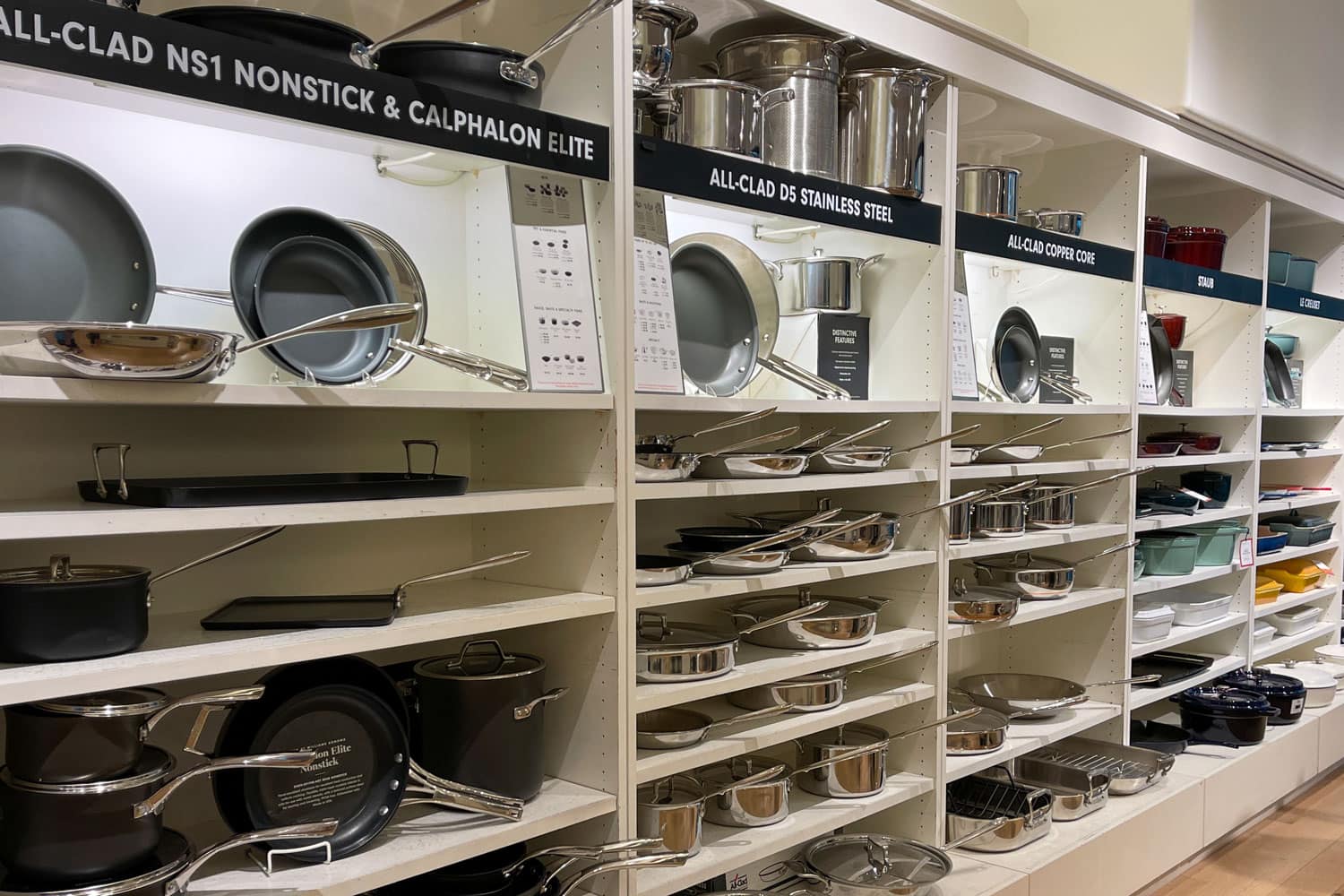
I hope this post has made it easier for you to understand why your All-Clad cookware is warping. The most crucial thing to remember is that warping happens the most when the cookware is exposed to abrupt temperature changes.
Check out some other All-Clad articles we have below:
Are All-Clad Pans Teflon Free?
How To Remove Non-Stick Coating From A Pan [Inc. All-Clad]






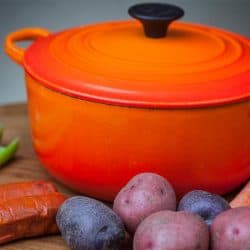
![A Nonstick All Clad pot and pan aisle at a Williams Sonoma store, Are All-Clad Pans Teflon Free? [A Complete Guide]](https://kitchenseer.com/wp-content/uploads/2022/10/Nonstick-All-Clad-pot-and-pan-aisle-at-a-Williams-Sonoma-store-250x250.jpg)
